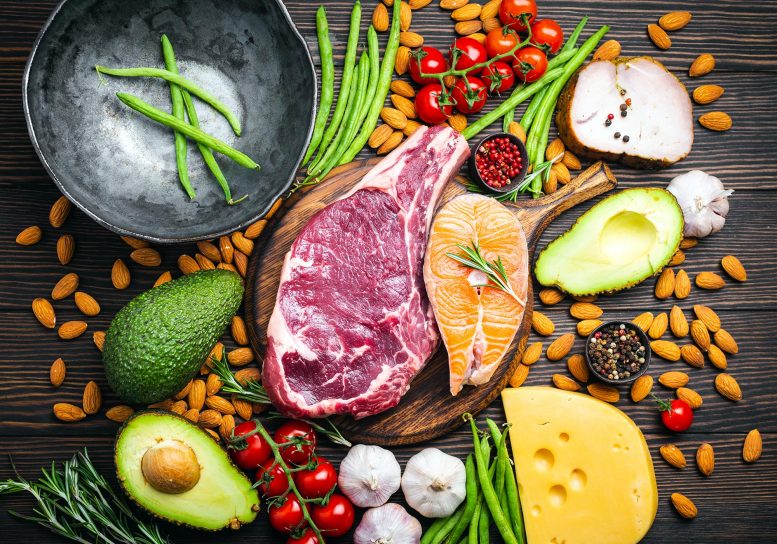What Make A Healthy Meal
WHY EAT HEALTHY, simply put because we want to satisfy all of the nutritional needs of our body, this can only be achieved if we eat a little bit of everything. Eating different varieties of foods that covers all principal nutrition groups: carbs, protein, healthy fats vitamins and minerals.
To give our bodies the energy it needs we need carbs, and protein for the creation for cells and muscules.
A balanced diet according to Professor Serge Hercberg, PU-PH, professor of nutrition at Paris XIII University is that to eat well is to combine pleasure and health. Health is having a balanced diet and nutrition is both balancing calorie intake and expenditure. A good diet is a way to reduce the risk of certain serious illnesses and it is also a way to age well.
A balanced meal must be composed with:Benefits of CBD
A serving of meat, fish or egg as a source of protein and iron (or a plant equivalent such as pulses, cereals or soy); Complex carbohydrates a dish full of pulses or bread as a source of complex, fiber and minerals; Vegetables and fruits including at least one rawness for fibers, vitamins and minerals; A dairy product for calcium intake; A fatty substance for essential fatty acids and certain vitamins; Without forgetting water, essential for hydration and the additional supply of minerals. Varied meals and processed foods.
A balanced meal does not need to be divided like the optimal plate presented here. These are only recommendations intended to give an idea of the proportions of each food group making an ideal meal. It also doesn’t mean that all meals should look the same! If one day you want to eat a little more or a little less than one food group, you can compensate during the week.
Processed foods like chocolate, cakes, fries, cookies, etc. can also be part of a balanced diet, but of course in moderation. The trick is to remember that they are all part of the same food group, whatever its name: sweets, junk food, junk food, snacks, etc. Eating a lot of different ‘sweets’ still means eating a lot of sweets. The more we eat of this type of food, the more likely we are to leave behind more nutritious food and / or consume unnecessary calories.
The Amount
At lunch, avoid heavy, very fatty foods, which will cause a decrease in alertness during digestion.
The snack should be very light, with quick sugars (fruit, chocolate, sugary drink …)
It is better that the evening meal is light. In fact, the calories stored during the evening meal will not be used since we sleep and the body spends practically nothing during this period. Result: they are stored as fat.
And some examples of the calorie intake of some foods (to which, if necessary, the calorie intake of the seasoning):
• 100 g of bread, 285 Calories,
• 1 apple, 54 Calories,
• 100 g butter, 760 Calories,
• 100 g camembert, 310 Calories,
• 100 g tuna, 175 Calories,
• 100 g potatoes, 85 Calories,
• 100 g lettuce, 14 Calories,
• 100 g peas, 67 Calories,
• 100 g cucumbers, 12 Calories,
• 100 g melon, 62 Calories,
EXAMPLES OF MEALS
A rule designed by Dr Creff, a specialist in sports dietetics, is very practical to memorize for everyone: GPL = 421, or for a complete meal: 4 portions of different carbohydrates (sugar, rawness, cuidity, starchy), 2 portions of proteins (animal and dairy origin), one portion of lipids (divided between constitutional fat in food and seasoning). If it is too much for you or you do not have time to eat a full meal during the day, at least aim for this goal during the day
Breakfast: fruit or fruit juice (G); bread or cereals; butter or jam (G); tea or coffee ; milk or cheese (P + L), to start the day off well and avoid snacking in the morning. Watch out for too strong coffee! Coffee or tea that is too strong, especially if it is accompanied by quick sugars (jam, sugar, pastries …) causes significant secretion of insulin by the pancreas, and therefore a risk of hypoglycemia around 11 a.m. .
Lunch: a starter with weakly seasoned raw vegetables (G + 1 / 2L)), a dish absolutely avoiding sauces (P + G), slow sugars (potatoes, pasta, etc. = G) or cooked vegetables ( G), a small piece of cheese (P + 1 / 2L) and a fruit (G).
Dine lightly: evening calories are stored more easily
Tips For A Healty Meal :
Eat at least 5 fruits and vegetables a day and try to reach 10. There are no super foods like you can see everywhere in magazines and social networks. All fruits and vegetables are good for health. The main thing is the variety because they do not contain all the same nutrients. Choose green ones as well as red ones because they contain more antioxidants.
Eat everything in moderation.
Make your homemade meals as much as possible to avoid processed foods, overconsumption of trans fats, sugar and salt.
Limit your consumption of meat and favor substitutes like tofu, tempeh, fish, eggs or legumes.
Choose bread and cereal products rich in whole or whole grains.
Avoid snacking rather take nutritious snacks. For some ideas for nutritious snack recipes, follow this link.
Don’t forget the nuts rich in omega 3.
Cook with seasonal products and preferably choose locally produced and / or organic foods.
Eat 3 meals and 1 to 2 nutritious snacks throughout the day.
Avoid the banned and restricted food.
Take pleasure in eating, savor each meal and share these moments with family or friends.
References:
Doctor Denise Cazivassilio 2014, a‘balanced diet’: Docteurclic
Doctorismo: Eat healthy: the rules of a healthy and balanced diet!
Macuisinesante evelyne 2018 ‘what is healty eating’
Fedecardio’ what is a balanced diet’
Hannah Rohrlach 2017 ‘what’s a healthy meal’: Alimentarium

